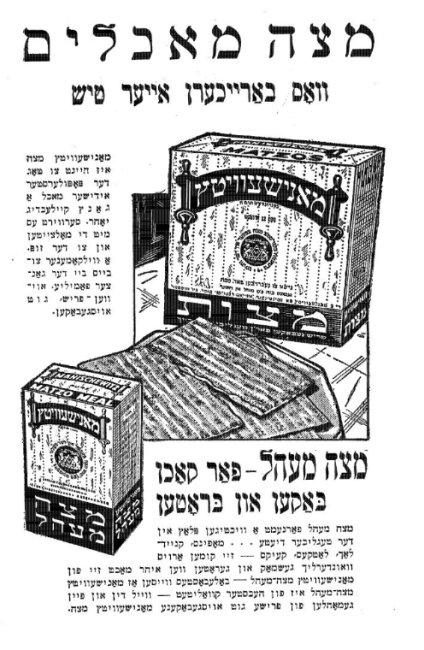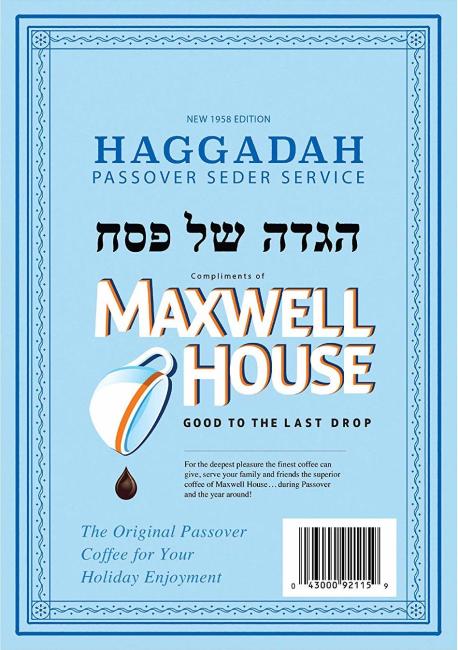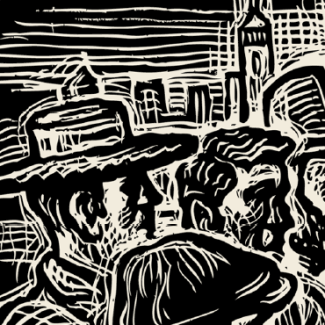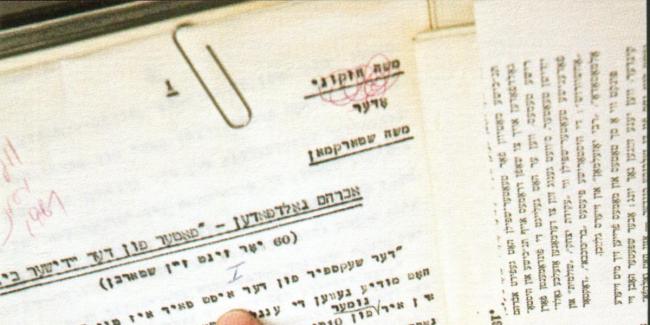Weekly Reader: Passover Stories
When I was a kid, I used to read the comic strips—a full page of them daily, and a pull-out section on Sundays—that were part of the newspaper that landed on our doorstep each morning. Looking back, I realize that most of them weren’t very good—the same jokes and gags, over and over, and a zealous avoidance of character development. One thing they all had was holiday content. Year after year they would mark the passage of Thanksgiving, Christmas, New Year’s, Easter, and every other festive occasion. Yiddish literature, in its day, was not that different. Holiday stories were a venerable tradition, and most of them appeared in the newspaper. Sholem Aleichem, a genuinely great writer, was a master of this genre. So, to both celebrate and participate in this tradition, here are a few Passover-themed items from our collections to enjoy and think about while you prepare for this upcoming Festival of Freedom.
—Ezra Glinter, senior staff writer and editor
Corporate Sponsorship

When it comes to food, Passover can be both a blessing and a curse. A curse because of the dietary restrictions forbidding bread or any kind of leavened product. And a blessing because Jewish cooks have managed to create some sumptuous dishes and meals despite those challenges. There have been plenty of Passover cookbooks published over the years to help them, including in Yiddish. Here are two: the first published by the Manischewitz company in 1944, specifically geared toward recipes involving Manischewitz matzo products, and the second published by the Planters peanut company in 1950, with an illustrated Mr. Peanut helpfully giving instructions on seventy different Passover dishes. (Whether or not peanuts are kitnies is a question we can put to the side for the moment.)
Read a Yiddish Passover cookbook from the Manischewitz Company
Read a Yiddish Passover cookbook from Planters
House of Maxwell

Manischewitz and Planters were far from the only companies to sponsor Passover products. The most famous corporate Passover book is probably the Maxwell House haggadah—you probably have a few in your own collection. In this episode of The Shmooze podcast, the Center’s Lisa Newman talks to Nora Feinstein, the woman behind the Maxwell House Haggadah Project, a social media initiative and virtual exhibition that collects photos, memories, and stories about the Maxwell House haggadah.
Listen to a podcast episode about the Maxwell House haggadah
Tradition, Tradition!

Everyone’s got their own Passover traditions, but Stuart Jay Robinson’s are in a league of their own. In this oral history interview the rabbi and lawyer shares fond memories of the Passover celebrations of his youth, which featured puffing on his grandfather’s cigar, having a shot of slivovitz before the seder, and going out for drives on grandfather’s lap during chol hamoed (the intermediate days of Passover following the first two seders).
Watch an oral history interview with Stuart Jay Robinson
The Schoolteacher

“It was the month of Nisan, three days before Passover, and our R. Khaykl didn’t have a bent penny for the holiday, as more than half his students’ fathers hadn’t paid him.” So begins this excerpt from Der melamed (The Schoolteacher), a novella by the nineteenth-century Yiddish writer Ayzik Meyer Dik. The author blended sharp observations of Jewish daily life with captivating, simplistic story lines to create didactic stories aimed at a broad readership. Often providing a critique of what he viewed as outmoded religious traditions, Dik is considered a precursor to such better-known Yiddish writers as Sholem Aleichem.
Read an excerpt from Der Melamed
From Eternity to Eternity

This essay by cultural critic Moyshe Shtarkman (1906–75) was first published in April 1960 in the journal Folk un velt (Nation and World). In it Shtarkman stitches together a complex, wide-ranging argument that historical memory, exemplified by the Passover seder and the retelling of the exodus from Egypt, has been a key factor in Jewish historical survival. Citing famous Jewish historians and thinkers of different eras (Josephus, Simon Dubnow, Hermann Cohen), he also suggests that the very idea of historical memory and national identity may derive from the Jewish prophetic tradition.
Read a translation of Moyshe Shtarkman’s essay
